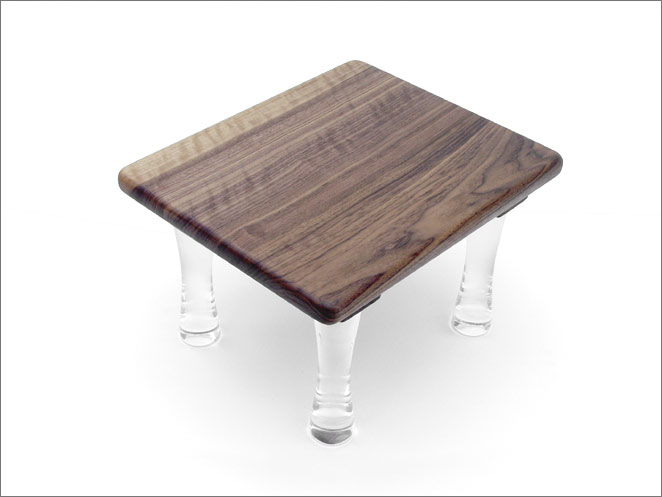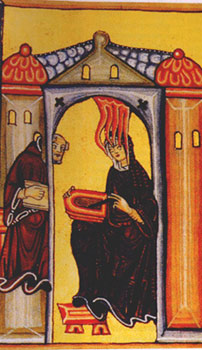 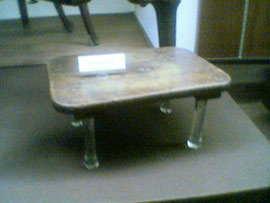 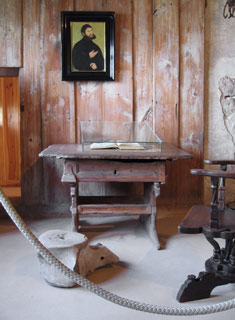 |
| SERIES SOUND |
| SERIES SELF |
| SERIES SCIENCE |
Every series of bootleg objects – and every object within each series – follows a slightly different concept. In the case of the “science” furniture, the topic moves not only around the object itself, but rather encompasses the scientist, his/her work, and the metaphysical implications of that work for society. All of it is present in the bootleg objects themselves, ready to be understood and interpreted and extended through the user.
2800 EUR weitere Informationen
One of the rare female proponents of the sciences in the medieval world, Benedictine nun Hildegad von Bingen was a scholar, alchemist, bioscientist, author, composer and a christian prophet and saint living from 1098-1179. In the cloister Eibing which she founded in the Rhine valley there exists the magnificient Codex Lucca in which she is depicted sitting on a throne-like chair, her foot resting on a small stool.
This image with all its medieval mannerism, folded perspective and psycho-billy hot-rod flamepaint colorwork provided the blueprint for the “von Bingen” stool. The imprecision of the two-dimensional drawing is carefully translated into three-dimensional space. The result is fashioned from 20mm strong massive steel to underline its presence. The paintwork was then commissioned to an airbrush artist with the briefing to recreate the original motive. The object is finished in high gloss paint to add more layers of interpretability. Just like the manually copied medieval codices, each copy of the stool by concept would be remade with slightly different angles and coloring.
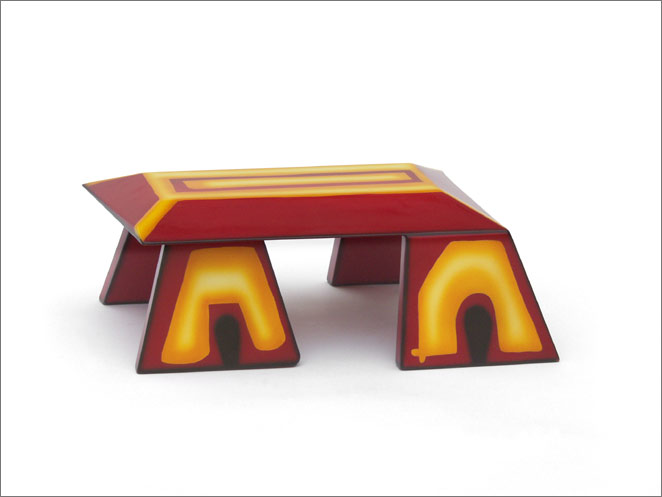
carved ash wood
2800 EUR weitere Informationen
Martin Luther 1483 - 1546, one of the leaders of German reformation, was
an Augustine monk and theology professor at the University of Wittenberg.
Like many of his contemporaries he bashed certain practices of the official
Christian Catholic to note shortly the cult of relics and selling of indulgences.
For the publication of 95 theses he was anathematised by the Pope and
laid with ban of the empire. To escape persecution he hid himself at the
Wartburg castle near Eisenach. There Martin Luther worked out a translation
of the Bible into German, for which he used beside the Latin version known
as „Vulgata “, Hebrew and Greek texts. In the age of printing,
his translation, called “Luther Bible” was spread all over
Germany and became one of the founding documents of written German language.
The original luther stool – a backbone fragment of a large whale
of unclear species – is the only remaining original piece in luthers'
study on wartburg castle – while all the other furniture in the
room was over the centuries broken down into tiny fragments that ended
up as relics themselves. The persistence of this object is continued in
the bootleg reinterpretation, which has been carved after the original
object from a heavy, single block of ash wood by an artisan from the alps
region, who adequately emulated the whale's osteoporosis by use of a chainsaw.
The wood is left without surface treatment, and the appearace of cracks
in the material is consiedred integral to its aging process.
(According to folklore, the devil appearred in luthers' study once, only
to be chased away by L. throwing his ink barrel at him – the stain
on the wall is in the picture on the top right)
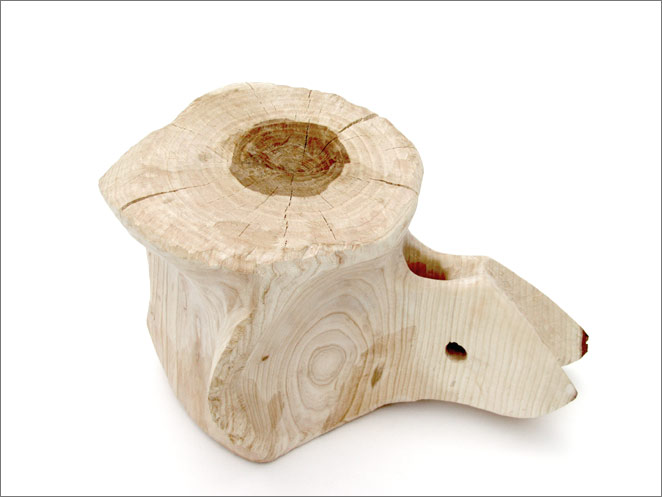
2800 EUR weitere Informationen
Physicist Michael Faraday (1791-1861) one of the discoverers of electromagnetism, invented not only the electrical motor and the transformer. Also, a number of physical laws and effects and an electric unit carry his name, and of course the famed faraday cage.
This bootleg object is modeled after his laboratory stool with insulating glass feet which is on display today in the royal society of London. In this case of bootlegging, the room for formal evolution is opened up through the designer's use of a mobile phone, with which the picture of the stool was taken; after that blurry picture, then, the remake was made. This use of 'imperfect' electronic devices in order to generate a shape might be considered - beyond mere improvisation - to be another gesture of hommage to a founder of todays' society as we know it (more irony is added by the fact that one of Faraday's last great experiments failed from lack of precision in his measuring devices).
